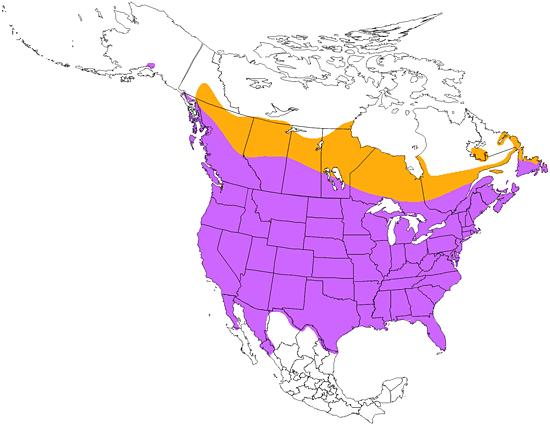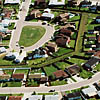European Starling
Sturnus vulgaris

Perching

Length: 9 in. (22 cm )
In 1890, 60 starlings from Europe were released into New York\'s Central Park. Using food and nesting cavities associated with humans, they multiplied and spread across North America to become one of the most wide spread and common species on the continent. They nest opportunistically in a wide range of cavities, and they can compete with native species, such as bluebirds and woodpeckers for nest sites. They feed on fruits, invertebrates and a wide range of food types. During the winter they gather in immense flocks, often together with blackbirds and robins. They can imitate the songs and calls of many other bird species.
The four-digit banding code is EUST.
Bibliographic details:
- Article: European Starling
- Author(s): Dr. Biology
- Publisher: Arizona State University School of Life Sciences Ask A Biologist
- Site name: ASU - Ask A Biologist
- Date published: 13 Jul, 2017
- Date accessed: 28 July, 2025
- Link: https://askabiologist.asu.edu/activities/bird/european-starling
APA Style
Dr. Biology. (Thu, 07/13/2017 - 15:38). European Starling. ASU - Ask A Biologist. Retrieved from https://askabiologist.asu.edu/activities/bird/european-starling
Chicago Manual of Style
Dr. Biology. "European Starling". ASU - Ask A Biologist. 13 Jul 2017. https://askabiologist.asu.edu/activities/bird/european-starling
MLA 2017 Style
Dr. Biology. "European Starling". ASU - Ask A Biologist. 13 Jul 2017. ASU - Ask A Biologist, Web. https://askabiologist.asu.edu/activities/bird/european-starling
Be Part of
Ask A Biologist
By volunteering, or simply sending us feedback on the site. Scientists, teachers, writers, illustrators, and translators are all important to the program. If you are interested in helping with the website we have a Volunteers page to get the process started.







